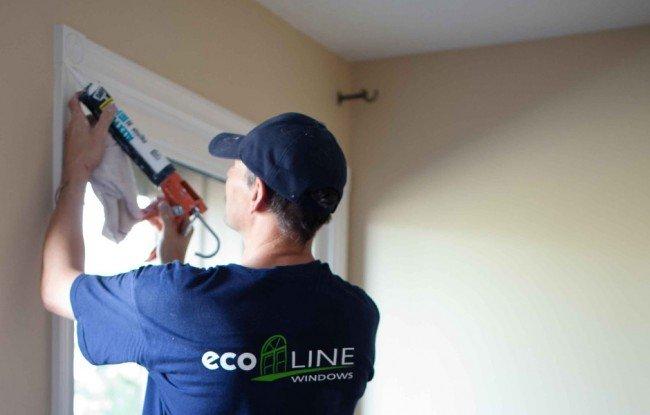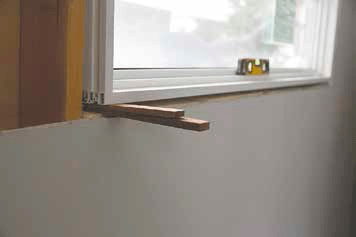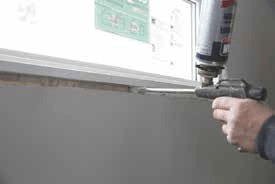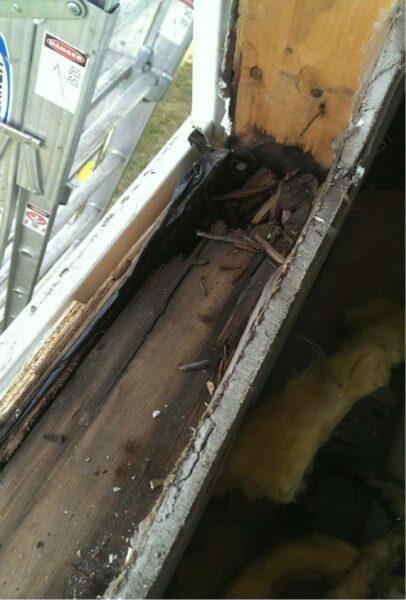The day for your home windows to be replaced has finally come. Like most homeowners, you probably don’t have the slightest idea how to tell whether or not the windows were installed correctly. Unfortunately, for the most part, the quality of your window and door replacement is entirely in the hands of the installers performing the job. That is why research is essential in choosing the right window company. Regardless of whether you get vinyl windows, wood, or aluminum. Regardless of your exterior door options. No product can keep your home warm and efficient if it isn’t installed properly.
However, if you do happen to be present during the installation of your new windows, there are certain things that all installers must do to ensure the job is done correctly. In Canada, most installations are (or should be) performed in accordance with CSA guidelines Look for the following 5 signs to tell if a windows and doors installation is done right.

-
Measurement
The correct installation of vinyl windows depends 100% on the window and all of its components being measured properly. Improper measurement will affect all other aspects of the installation in which case the installer would have to make a lot of adjustments to make the windows fit. If the installer tells you or you observe them doing any of the following, it should be a warning sign that the custom windows were measured incorrectly: enlarging the opening, or occurrence of a big gap on all sides of the window. However, if the installer changes the size of the jamb this does not mean that the window was measured wrong, but rather that it was difficult to determine the thickness of the wall. If shims are not inserted or insulation foam is not applied then chances are that the window is too big.
Disclaimer: Custom windows that were measured to be larger than the opening can still be installed if the opening is enlarged. Depending on the dimension that needs enlarging this could either be a simple process or a highly complicated one. Not every windows installer has the know how to carry out this intricate process.
Tip: To avoid your window being boarded up with plywood while the correct sized window is being re-ordered, ask the installers to measure the new windows before removing the old ones.
-
Window Positioning
The positioning of a window refers to its placement in the opening. Two options are available: closer to the inside of the house, or closer to the outside. If the exterior walls are 2×4, this ceases to be an issue as the thickness of the window should fit the thickness of the wall almost perfectly. For wall thicknesses greater than 2×4, the correct placement of the window will depend on the size of the jamb. In cold climates especially, it is desirable to have the custom windows positioned as close to the inside as possible. This is important for both the short term and the long term performance of high-efficiency windows. Short term, this positioning will help decrease the amount of condensation accumulating on the glass in households with higher than normal humidity. Long term it will contribute to reduced wear tear on locking mechanisms, sash integrity, and decrease the chance of sealed unit failure.
-
Shims
Correct shimming is arguably the most important step of ensuring proper operation, proper performance, and long life of replacement windows. Shims are necessary to provide support to the window at the point of anchorage. This is where a screw is placed to fasten the window to the framing. The location of these points depends on the various window styles and window designs. The placement of shims at these points will reduce the warping of the window frame over time, it will hold the window in place better and reduce “growing pains” – creaks and groans made by the material expanding and contracting from temperature change. Like most things on this list, shimming does not stand alone as the be all and end all feature of proper custom windows and doors installation, but is in fact closely related to level installation and the placement of insulation foam.
Disclaimer: Please keep in mind that older homes were built before building codes were widely followed. This means that not all walls were built straight, and not all framing done properly. Thus, it is not always possible to follow all installation procedures to a tee. In such cases, the proper operation of the window take priority over the presence of shims or the window being level and/or plumb.

-
Level, Plumb, Square
What does it mean when a window is installed level, plumb, and square? In terms of installation it means that the horizontal planes are perfectly horizontal, it means that the vertical planes are perfectly vertical. When both conditions are met, a window is said to be square. These three factors are crucial to the proper operation of window parts and the unit as a whole. If any of the three are out of whack, then sashes won’t close, latches won’t latch, and crank mechanisms may get bent out of shape. All of this will cause gaps to appear between the operating components and the fixed ones. As a result, your windows will become drafty and will let heat out in the winter while letting it in during the summer. To determine if a window is level and plumb, installers should use a level on each surface.
Disclaimer: Keep in mind that not all things are created equal. Even the best windows may be installed level and plumb, but the wall that it is installed in isn’t. This window will not look right. If there is a counter below the window that is not level, as in a kitchen, the window will look crooked even though it is the counter top that is off level.

-
Insulation Foam
The final component of a proper installation is well-placed insulation foam. In order to apply enough foam, the windows have to be properly measured. If a gap between the window frame and the framing is too narrow the amount of foam will be inadequate to insulate the window or to keep out the moisture. If the gap is too wide then most of the weight of the window will be supported by the foam. This will lead to potential deformations of the frame and eventual malfunctions of operating units. Deformations and operating unit malfunctions are also a side effect of too much insulating foam. The pressure created by the foam warps the frame making it difficult to move sliding units and to close crank units completely. The installer should make one pass with the foam gun on each plane of the window; as long as no gaps remain then no extra foam is added. Any minor gaps should be sealed with caulking.

Bonus: Rotted Wood
A bonus feature that you should watch for during the installation process is whether or not installers replace rotted wood. This procedure is aimed at ensuring that the structure that holds the window in place will remain strong at least for the lifetime of the replacement windows. It should be noted that while it is a bonus feature on this list, it is not a bonus during installation. The replacement of rotted wood is always taken into consideration, and unless the damage is overwhelming, no extra fees should be applied by the window company to affect the window replacement cost. If the damage is extensive the installer should notify the homeowner before beginning to replace any members.

The window replacement process is not overwhelmingly complicated but like most other things it does have its quirks that require special attention. These six aspects mentioned above should ensure that the windows are replaced properly and provide you with a peace of mind.
Check out these window replacement articles:
One Thing You MUST Know Before Scheduling A Window Replacement Quote
How Long Does an Installation Take?
Bad Window Installation: What To Look Out For
